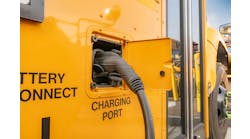North America currently has more than 20 GW of installed utility-scale PV generation, with more than 14 GW brought online in 2016 – the largest amount of PV installed to date. But is the majority of this base realizing its full potential? Solar plus storage systems offer a way for owners and operators to expand production hours, increase energy production and maximize revenues.
Energy storage makes PV generation a dispatchable, revenue-generating asset. For example, the addition of DC-to-DC energy storage allows for clipping recapture. With storage attached to an array, the batteries can be charged with excess PV output when the PV inverter would otherwise begin clipping. Instead of losing these kWhs, this stored energy can be fed into the grid at the appropriate time.
There’s also an opportunity to make money on the edges with low voltage harvesting. In the morning and evening, when voltage on the array is below the PV inverter ‘wake up’ threshold, available generated energy isn’t captured. This is also common on cloudy days. Adding energy storage through a DC-to-DC converter allows for the capture of this generated energy from the margins.
This guide explores these and other “missed opportunities” for energy capture and revenue generation, including capacity firming, energy time shifting, curtailment and outage recapture, and modulated power for continuous grid connection.
AC-coupled, DC-to-DC or Hybrid?
So, which energy storage system would work best? Through six solar plus storage use cases, this paper evaluates the three principal ways to couple energy storage with PV: AC-coupled, DC-to-DC and hybrid solar plus storage inverters, in terms of cost, efficiency, reliability and flexibility.
A new cost-effective approach of coupling energy storage to existing PV arrays with a DC-to-DC converter opens up new use cases not possible with AC-couple storage. This approach leads to higher round trip efficiencies and lower cost integrations with existing PV arrays.
To learn more about capturing missed opportunities and how to maximize production as well as profit with solar plus energy storage, download this guide.






